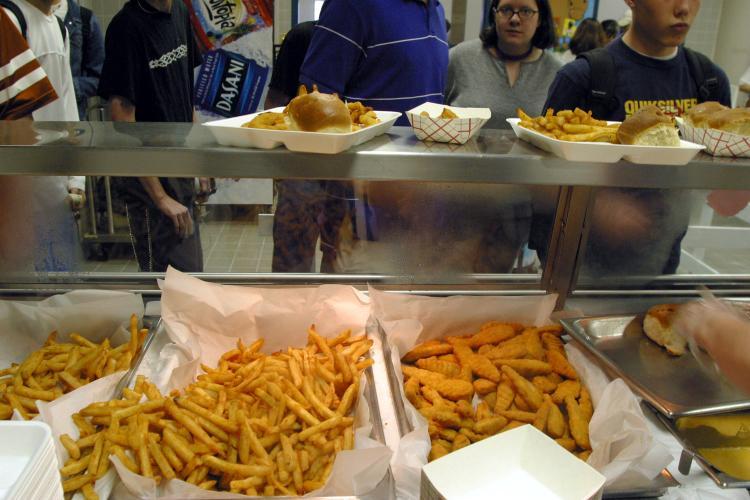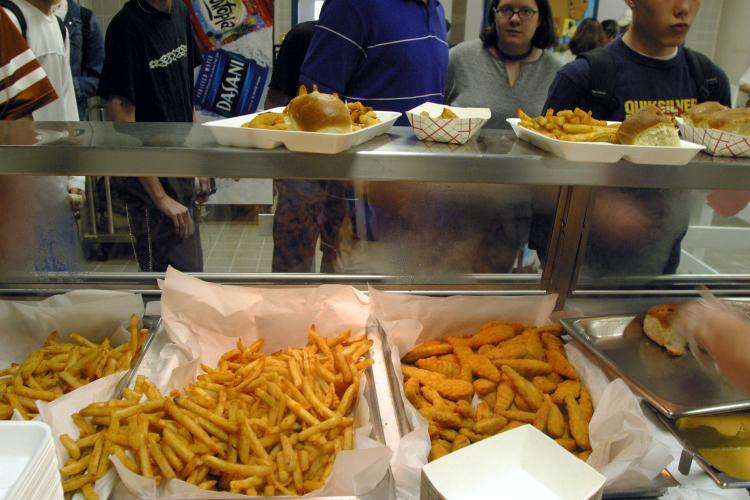Examine grocery store shelves across the country and you'll find a growing price gap between cheap empty calories and the rising cost of proper nutrition. But this disparity doesn’t happen by accident. According to a recent report, over the last 15 years U.S. taxpayers have spent $245 billion on subsidies for the ingredients that contribute largely to junk food.
In September, the California Public Interest Research Group (CALPIRG) released an “Apples to Twinkies” report detailing the dietary disconnect behind this long-standing food subsidy program. According to CALPIRG, taxpayer money is fueling the nation’s childhood obesity epidemic.
“At a time when childhood obesity rates are skyrocketing, it’s absurd that we’re spending billions of taxpayer dollars to make the problem worse,” said Austin Price, health care associate with CALPIRG, in a statement. “It’s absurd that junk food is subsidized by taxpayers, while fresh fruits and vegetables barely get a bite at the apple.”
So how do tax dollars end up supporting junk food? Subsidies largely focus on three top crops (wheat, corn, and soybeans) and reward the farmers that grow them, keeping prices low for consumers. But while these key crops may have been familiar to our ancestors, many of the modern products they become are not.
According to CALPIRG, the prices for refined white flour, hydrogenated soy oil, and high fructose corn syrup remain low, because the crops from which they’re sourced receive nearly all food subsidies. As a result, the foods that contain these products (like sodas and Twinkies) can be made for pennies, while costs for carrots, broccoli, and nearly every other U.S. grown fruit and vegetable, continue to rise.
Of course, there are a variety of reasons behind increased production and consumption of junk food, such as the lure of convenience, relentless marketing, and consumer taste. But according to an August 2011 study in the journal Health Affairs, federal programs that keep junk food prices low only serve to add further insult to injury, as these incentivization policies directly conflict with the government’s own nutrition recommendations.
The USDA’s nutritional advice found in its 2010 “Dietary Guidelines for Americans” emphasizes the need to consume more potassium, vitamin D, and other vital nutrients, while reducing calories from sugar. Examining the economic impact of people attempting to meet these guidelines, researchers discovered that increased consumption of foods that contain potassium, for example—the most expensive of the four recommended nutrients—would add $380 per year to the average consumer’s food costs.
Compare this to the savings won from consuming more sugar. Researchers said that each time consumers obtained 1 percent more of their daily calories from the sweet stuff, their food costs significantly declined.
“The problem of insufficient calories for children in past decades has been replaced by growing obesity problems,” wrote researchers who, like CALPIRG, recommend a reorientation of agriculture subsidies and other incentives to support better access to fruit and vegetables.
The USDA is responsible for addressing both the nation’s food policy and American dietary advice, prompting researchers to accuse officials of sending the public a mixed message. The federal government’s graphic representations of a healthy diet (such as the food pyramid and the more recent “food plate”) illustrate the importance of fruit and vegetable consumption. But in truth very little goes to subsidizing food such as sweet corn (about 1 percent of all corn grown in the United States). Instead, most federal money backs the corn-derived products that the government’s own guidelines advise Americans to avoid.
Despite this conflict, food subsidies were born of good intentions. Over time, however, this program has even come to hurt the same people it was designed to serve.
Support for American agriculture emerged in the 1930s as an effort to help struggling family farms cope with the Great Depression—a devastating time for Dust Bowl-era farmers. But according to the CALPIRG report, big agribusinesses, not family farms, are the ones that see the lion’s share of today’s subsidies.
“Ironically, the large producers who are the disproportionate recipients of subsidies may then use the dollars they receive from the federal government to buy out the smaller farms around them, meaning that the subsidies can be actively harmful to small family farmers,” the report states.
Government Food Subsidies Fuel Obesity Epidemic, Says Report
In September, the California Public Interest Research Group (CALPIRG) released an “Apples to Twinkies” report detailing the dietary disconnect behind this long-standing food subsidy program.

By Conan Milner
Updated:





